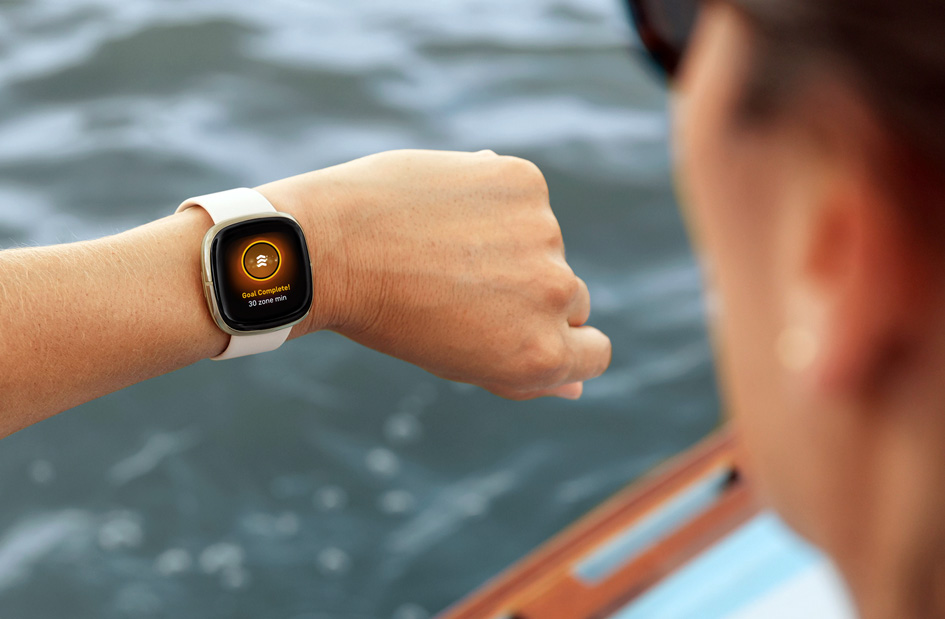Fitness wearables shipments to hit 345m this year
- February 2, 2022
- Steve Rogerson

The wearables market will see 344.9 million shipments in 2022 with sports, fitness and wellness trackers leading the way, according to ABI Research.
During the Covid-19 pandemic, wearables became a tool for tracking, monitoring and combating the spread of the disease throughout the world. According to ABI Research, the number of wearables shipped worldwide in 2020 increased to 259.63m, with sports, fitness and wellness trackers accounting for 112.15m and smartwatches 74.30m.
Now, due to the increasing number of use cases and improved features, the upward trend is predicted to continue. In 2021, 304.7m wearables shipped globally. In 2022, the wearable market is projected to reach 344.9m of shipments worldwide, a growth of 13.2%.
“While the wearables sector has witnessed strong growth so, too, has mobile accessories, where demand for wireless headsets has risen dramatically in the past year,” said Filomena Iovino, research analyst at ABI Research. “This increase has been driven by the growing availability of more stylish, feature packed and technically capable devices, notably the use of true wireless, on the market and, once again, the pandemic’s impact on consumer behaviour and lifestyle.”
Wireless headset shipments reached 502.7m at the end of 2021 and are expected to exceed 700m units in 2026, with a CAGR of 7.6%, and leading the smart accessory market. Features such as noise cancellation technology will improve the user experience and offer a more extensive range of future use cases.
“Furthermore, as voice control becomes the dominant user interface for hands-free control of smartphones and smartwatches, true wireless headsets will also become significant drivers for the growth and adoption of voice assistants,” Iovino said.
According to ABI, global TWS headset shipments will reach more than 600m units in 2026 at a growth rate of 19%.
Additionally, certain segments of the mobile accessories market are set for fundamental change as total in-box shipments are to decline further due to the removal of items, notably chargers and headphones, by some smartphone vendors. Similarly, directives aimed at harmonising charging ports to the use of a USB-C connector to reduce e-waste and improve consumer convenience could also alter the accessories market, potentially accelerating progress towards greater use of wireless charging and free-port devices.
However, the wireless charging ecosystem is still relatively immature, and time will be required to improve specific features, such as charging times and the high costs of accessories, to ensure it can offer high-quality performance and enhanced user experiences.
Despite the introduction of 5G networks as a premium feature, many device types in the wearables and accessories sector will not become completely self-connected, instead they will still need to be tethered to a smartphone or hub. Indeed, the 5G attach rate for wearables and accessories will remain low at about 0.6% by 2026 and will be mainly related to sectors such as smartwatches and headsets.
“High data gathering and low power efficiency will be the key strengths for these smart gadgets, raising demand and increasing popularity, particularly in the healthcare industry,” said Iovino.
As a result, wearable technology might be transformed, as gadgets shrink while gaining capabilities.
“Although 5G is likely to appear in greater numbers of smartwatches in 2023, volume is expected to remain low at 3.55m by 2026 while 4G will still represent the highest volume with 45.4m shipments and a CAGR of 31.7% by this stage,” said Iovino.
Healthcare wearable devices will remain another dominant sector throughout the forecast period and one that lends itself well to cellular connectivity. These devices enable consumers to track vital healthcare information in and beyond a hospital setting.
“Some healthcare devices are currently shipped with LPWA-LTE connectivity or 4G technology, expected to reach by 2026 0.86m and 0.72m of units, respectively,” said Iovino. “Moreover, this could be a good sector for 5G owing to its low latency, reliability and broadband speed connectivity.”





